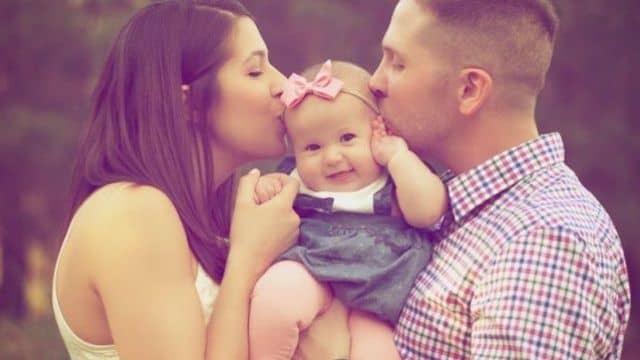Advertiser Disclosure
How to Get Best Home Improvement Loans
Updated On January 12, 2022
Editorial Note: This content is based solely on the author's opinions and is not provided, approved, endorsed or reviewed by any financial institution or partner.

A home improvement loan can help you pay for home repairs as well as home renovations. With a home improvement loan, you can get a low-rate personal loan to remodel your kitchen, create a new bathroom, or make other essential home repairs.
In this article, you can learn the following about home improvement loans:
- What are home improvement loans?
- How do home improvement loans work?
- What are the advantages and disadvantages of home improvement loans?
- What’s the best way to compare home improvement loans?
- How do you get a home improvement loan?
- Should you get a home improvement loan?
- What are some alternatives to home improvement loans?
What are home improvement loans?
Home improvement loans are unsecured personal loans that can be used for home repairs and home renovations. Typically, you can get a low-rate home improvement loan up to $100,000, which could pay for a new kitchen, bathroom or even a swimming pool. When you borrow a home improvement loan, you can borrow the full amount upfront and then make monthly repayments from one to seven years. Since home improvement loans are unsecured, this means that you don’t have to pledge your home as collateral.
How do home improvement loans work?
Home improvement loans help you increase the value of your home. When you need to make necessary upgrades or want to remodel, home improvement loans can provide essential funding for these projects. Home improvement loans can be used for projects such as:
Home maintenance
Houses can deteriorate over time due to traditional wear and tear. As a result, you may need to make upgrades on both internal or external aspects of your home. These can be planned repairs, or in some cases, may be emergency repairs. These repairs also may be due to weather, condition of your home, or age of your home, for example. In either case, a home improvement loan can be a smart way to get fast funding to make these repairs. Home maintenance projects may include replacing a water heater, upgrading a boiler, fixing rain gutters, replacing plumbing, or updating electrical wires. You also may need to repair the deck or get a new roof.
Home renovations
Home renovations can be smart investments to increase the value of your home. Home renovations also can your house feel more like a home. When you renovate a home, a home improvement loan can be essential to get funding for your projects. Whether you’re remodelling a bathroom, updating your kitchen, or adding a new bedroom, a home improvement loan can get you funding quickly so that your projects don’t get delayed.
What are the advantages and disadvantages of home improvement loans?
It’s important to understand both the advantages and disadvantages of home improvement loans.
Advantages
Home improvement loans have several advantages. Home improvement loans have quick funding, so you can get them in your bank account typically within one or two days. Personal loans have monthly instalments, so that means you can pay back the loan over time each month. This makes repayment of personal loans consistent and predictable, so you always pay the same amount each month. Finally, having a personal loan can help improve your credit score. Why? Personal loans are a type of instalment debt, and you can build credit when you repay instalment loans each month in full and on-time.
Disadvantages
Home improvement loans also have several disadvantages. Since home improvement loans are unsecured, it’s possible that they could have higher interest rates than a home equity loan or a home equity line of credit. That said, your final interest rate may depend on several factors, such as your income, credit, debt to income, and history of financial responsibility, among other factors. So, it’s possible that you could qualify for a competitive interest rate with a home improvement loan. Unlike a mortgage loan, the interest on home improvement loans aren’t tax deductible.
What’s the best way to compare home improvement loans?
There are several ways to compare home improvement loans.
APR
Start by comparing the APR, or annual percentage yield. The APR represents the total borrowing cost, including any fees, for the home improvement loan. Ideally, the goal is to find the lowest APR.
Loan Terms
Next, you should evaluate the loan terms and key features of the home improvement loan. For example, you can evaluate the loan amount for which you qualify. If you need a larger home improvement loan, for example, compare lenders to make sure you are approved for that amount. Similarly, you should evaluate flexibility of repayment. For example, a shorter loan term means you can save more money but your monthly payments will be higher. In contrast, a longer loan term means your monthly payment will be lower but you will pay more in total interest.
Calculator
This home improvement loan calculator will help you calculate your monthly payment to make sure it’s affordable.
Application Process
Find a lender that has an easy application process and can fund your home improvement loan promptly. This will help reduce any bureaucratic roadblocks.
How do you get a home improvement loan?
To get a home improvement loan, you should take several steps:
Compare lenders
Compare lenders, APRs, loan terms and key features of the home improvement loan. Your goal is to find the lowest rate and an affordable monthly payment
Check your rate
Most lenders let you check your rate before you apply. This is called a soft credit check and won’t affect your credit score. This can help you compare the cost of your home improvement loan. You can also check rates with multiple lenders with no impact to your credit score.
Upload documents
Before you apply, make sure you have documents ready to upload. This may include pay stubs, W-2s, financial information, proof of address and identification like a driver’s license or passport.
Apply
You can apply online for a home improvement loan. The process takes about 15 minutes, but may vary by lender. Most lenders make a decision within a few days, and funding can happen in as soon as a day.
Should you get a home improvement loan?
Many homeowners ask: “Should I get a home improvement loan?” As a homeowner, you’re likely to face both maintenance and renovation projects. Some of these projects may be annually; some may happen every several years. In either case, you may need to pay for these costs. A home improvement loan can be a helpful way to fund these projects. One key advantage of an unsecured personal loan to pay for home improvement projects is that almost any purchase can be covered.
What are some alternatives to home improvement loans?
There are alternatives to personal loans for home improvement projects. Some alternative options include a home equity loan, a home equity line of credit (HELOC), or a credit card, among others. That said, if you don’t want to use a credit card or tap your home’s equity, a personal loan may be preferred if you have good to excellent credit. Since most personal loans are unsecured, you won’t have to pledge your home or other assets as collateral. Personal loans also have a shorter repayment period. While monthly payments may be higher, you can save more interest over time since the repayment period for personal loans is typically one to seven years. Here are some alternatives to a personal loan:
Home equity loan
A home equity loan helps you tap the equity in your home without refinancing your mortgage to get a lump sum of money. This money can be used for home improvement projects. For example, if your mortgage has a low interest rate, you may not want to refinance. However, the interest rate on your home equity loan may be higher than your mortgage.
Home equity line of credit (HELOC)
A home equity line of credit (HELOC) can be used to finance home improvement projects. Unlike a home equity loan, a HELOC is a line of credit, which means you don’t get a lump-sum payment. Typically, with a HELOC, you could borrow up to 80% of your home’s value. Since a HELOC is a credit line, you would draw down on the credit line as needed to pay for your home improvement projects.
Credit card
You could pay for your home renovations with a credit card. Be careful, however, because interest rates on a credit card likely are higher than interest rates for a personal loan. One option is to use a 0% APR credit card, which may have a 0% Intro APR for a certain period of time.



